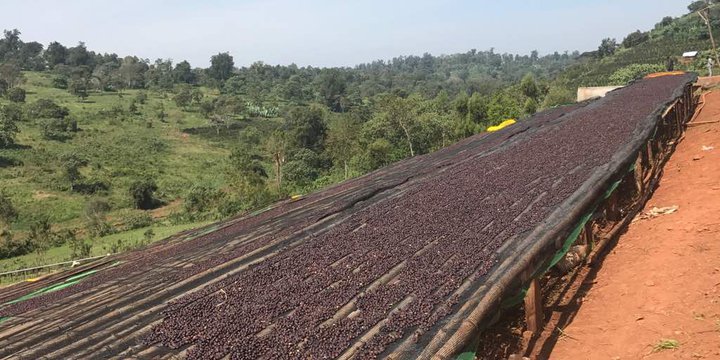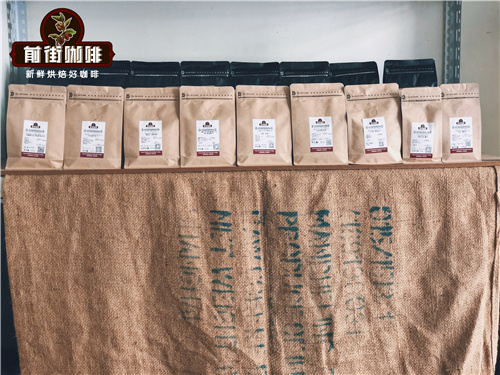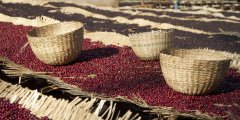How is the coffee quality in Ethiopia's Koke washing station? introduction to the flavor of Koke coffee beans

Professional coffee knowledge exchange more coffee bean information please follow the coffee workshop (Wechat official account cafe_style)
Original link: https://coffee.exchange/zh/
KOKE MILL-YIRGACHEFFE WOREDA, GEDEO ZONE
The family-owned Koke washing station was built in 2011 and has improved a lot since 2015, and its staff have begun to provide growers with ways to improve the quality of their coffee. The Koke water washing station is located on the hillside, and coffee grows above and below the water washing station. In the past three years, Koke station managers have distinguished high-altitude cherries and their quality has improved significantly. Ninety-six small-scale farmers have provided Koke with cherry harvests, most of them from multi-generation peasant families.
Their multi-generation experience is evident in sun-cured coffee, which is dried for 21 days on 106 elevated beds in washing stations and then stored in well-ventilated warehouses for a month. Cherries are sorted by hand when they arrive at the washing station to remove cherries with lower density. Use tarpaulins to prevent coffee from drying too quickly and losing its wonderful and unique flavor. When the coffee seed is dried in the cherry, grind it and remove the dried pulp and parchment at the same time. Raw beans are also selected according to color before export.
Geography
Location
Yirgacheffe Woreda, Gedeo Zone, Southern Nations, Nationalities, and Peoples' Region
Coffee
Koke Lot#123 Natural Process
ET19-0123
Juicy and clean, this is an elegant natural coffee with no shortage of sweetness. Flush with ripe grape, plum notes and a resonant jasmine flavor presented with uncommon clarity. Packed full of delicate jasmine tea, blueberry syrup, dried fruit, almonds, and sweetened condensed milk
END
Important Notice :
前街咖啡 FrontStreet Coffee has moved to new addredd:
FrontStreet Coffee Address: 315,Donghua East Road,GuangZhou
Tel:020 38364473
- Prev

How to distinguish the bidding, gold bid, red mark, green mark and Chaka batches of rose summer coffee beans in Rosa Village?
GeshaVillage Village (source: GrandCru) GoriGesha forest, where the rose species were first found. In 2011, Adam followed consultant WillemBoot to explore the forest around the manor.
- Next

Introduction of Aricha Mill in Coffee Mini-producing area of Ethiopia the relationship between Aricha and Idido
For more information about coffee beans, please follow the coffee workshop (Wechat official account cafe_style) ARICHA MILL-YIRGACHEFFE WOREDA, GEDEO ZONE this coffee comes from our water washing station partner in Aricha, located in Idido Village, Yirgacheffe District. Aricha Mill is one of the micro-producing areas, where the coffee flavor is very lively.
Related
- Detailed explanation of Jadeite planting Land in Panamanian Jadeite Manor introduction to the grading system of Jadeite competitive bidding, Red bid, Green bid and Rose Summer
- Story of Coffee planting in Brenka region of Costa Rica Stonehenge Manor anaerobic heavy honey treatment of flavor mouth
- What's on the barrel of Blue Mountain Coffee beans?
- Can American coffee also pull flowers? How to use hot American style to pull out a good-looking pattern?
- Can you make a cold extract with coffee beans? What is the right proportion for cold-extracted coffee formula?
- Indonesian PWN Gold Mandrine Coffee Origin Features Flavor How to Chong? Mandolin coffee is American.
- A brief introduction to the flavor characteristics of Brazilian yellow bourbon coffee beans
- What is the effect of different water quality on the flavor of cold-extracted coffee? What kind of water is best for brewing coffee?
- Why do you think of Rose Summer whenever you mention Panamanian coffee?
- Introduction to the characteristics of authentic blue mountain coffee bean producing areas? What is the CIB Coffee Authority in Jamaica?

